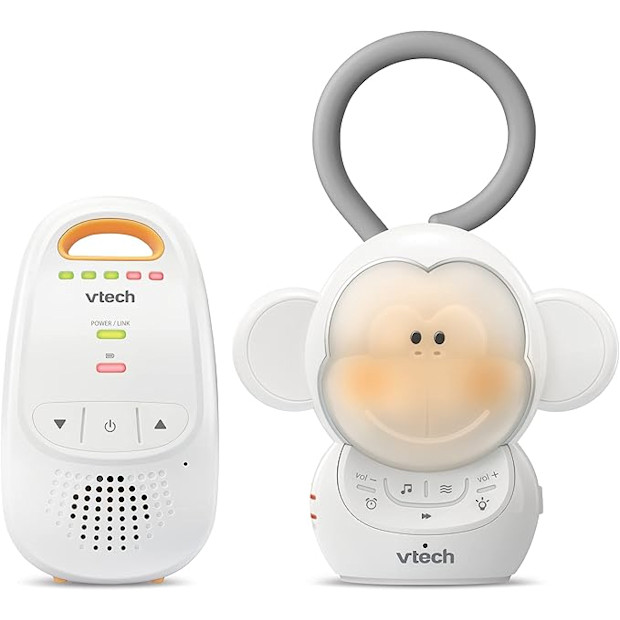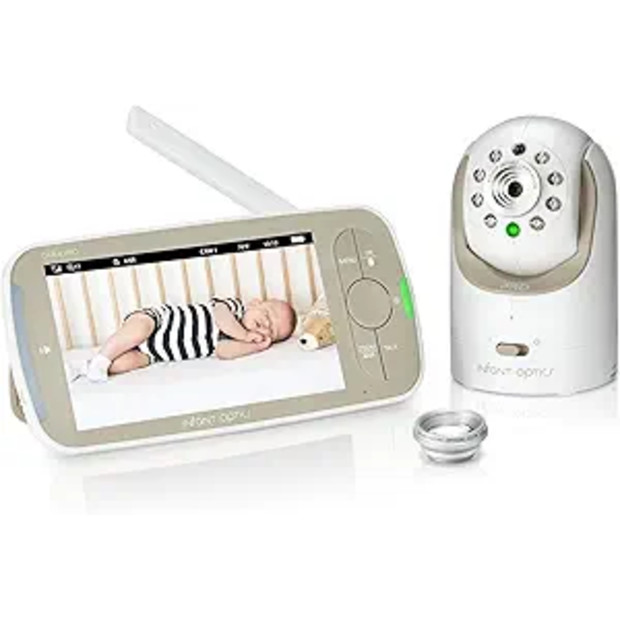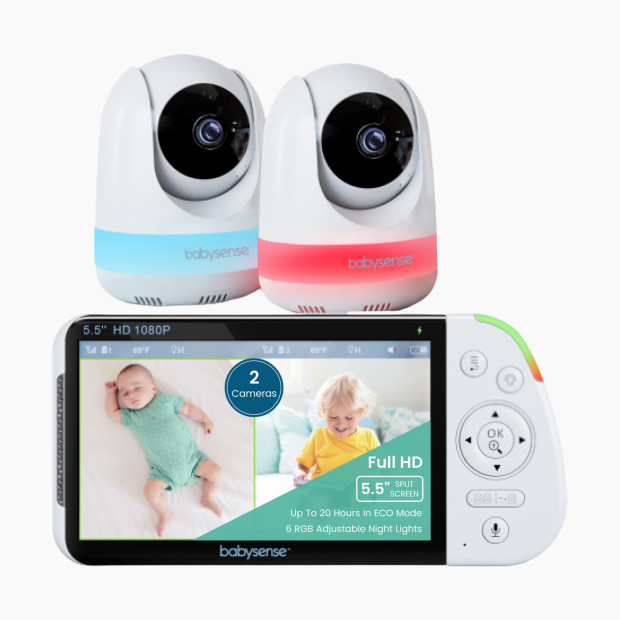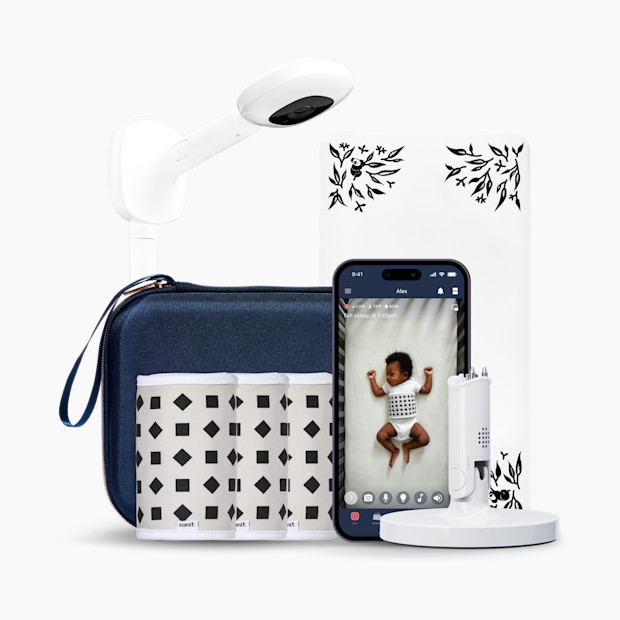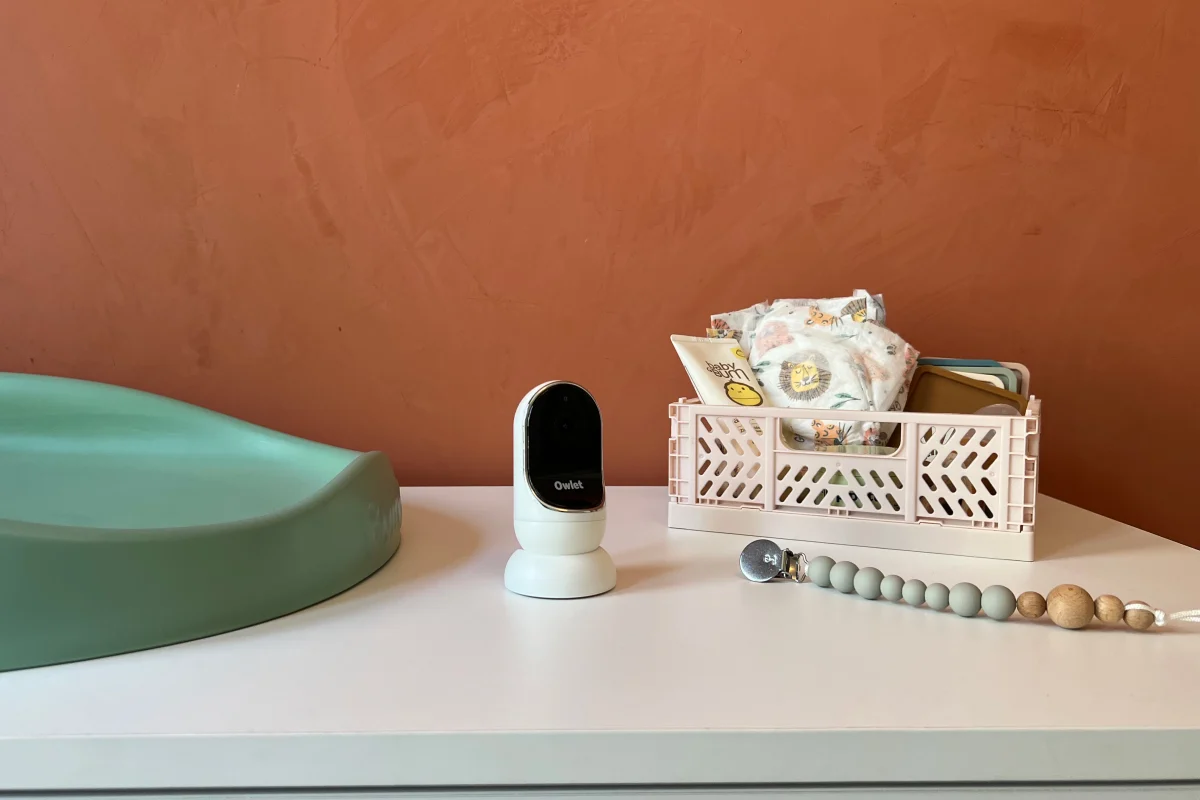
Are WiFi Baby Monitors Safe?
These expert tips can help you ensure your monitor's connection is secure and private.

In This Article
Whether you’re shopping for a baby monitor to add to your registry or you already use one on a daily basis, you might be debating whether or not to use a WiFi monitor. They come with some cool features that non-WiFi monitors don’t have—like the ability to check in on your baby from anywhere and share photos and videos via the cloud—but they have their disadvantages, too.
Recent reports of WiFi baby monitors being hacked have made some parents wonder about the security of these devices. As you're considering your monitor options, it's important to understand the potential risks of these high-tech gadgets and what you can do to ensure your WiFi monitor is secure. To help you understand the risks and options, I spoke to Cooper Quintin, senior staff technologist at the Threat Lab of the Electronic Frontier Foundation, a non-profit that develops technologies that can help people protect their privacy and security online.
What's the full story behind WiFi monitor hacking?
Though rare, a few people have reported that their WiFi monitors were hacked. In one case, a family reported that they heard a stranger’s voice shouting expletives, and when they realized it was coming from the baby monitor, they turned it off and called the police. In another account, a mother realized her WiFi monitor had moved—it was pointed at her and then panned across the room, though neither she nor her partner had used the app that day.
The main advantage of WiFi baby monitors is that they allow you to check on your baby from anywhere in the world, generally from an app on your phone. However, in order to do that, you have to set up an account with the device and connect it to the internet via WiFi.
How do WiFi baby monitors get hacked?
Hacking can happen anytime you connect any device to the internet. That connection is like opening a door that someone else could step through. The data from the device has to pass through a centralized server that handles the transmission of information, but hackers can intercept the data as it travels through this server, giving them access to your camera, Quintin says.
It’s not clear how often cameras get hacked (or why), but there are steps you can take to protect your device. Hackers can generally gain access to a baby monitor account by using the username and password—information that they can steal in a number of different ways. But there are ways to protect your device, including using a strong password and choosing a device with additional security settings like two-factor authentication or a QR code.
Which type of baby monitors are the most secure?
WiFi monitors aren’t the only baby monitors out there, and you may be wondering at this point if the non-WiFi options are also secure against hackers. Non-WiFi monitors come in a few different types, each with their own advantages as far as features and security. According to Babylist polling and registry data, most families actually end up purchasing some kind of non-WiFi monitor versus one that’s WiFi enabled.
Audio-only monitors provide basic sound transmission and work much like a walkie-talkie. It’s unlikely that they’ll get hacked—though theoretically, someone could hack an audio monitor if they were within about 1,000 feet and used a radio scanner to listen in, but there are no reports of this happening. If you’re looking for an audio-only monitor with a limited range (1,000 feet maximum), the VTech DM1411 is among Babylist’s Best Baby Monitors.
Local video monitors have a maximum range of about 1,000 feet, meaning the video display unit must be within that distance of the camera in your baby's room. These can potentially be hacked, Quintin says, but only if the hacker is within that 1,000-foot range. There are also hybrid video models that can be used locally or connected to WiFi. Here are some of our favorite non-WiFi video monitors:
What are the advantages and disadvantages of a WiFi baby monitor?
The most significant benefit is the ability to remotely monitor your baby from anywhere with an internet connection. This provides peace of mind knowing you can check on your child even when you're not in the same zip code. It’s a feature that other baby monitors don’t have, so it’s understandable why they’re pretty popular—about 30–40% of monitors added to Babylist registries are WiFi monitors.
However, WiFi monitors are the riskiest in terms of possible privacy violations from hackers. And besides the security risk, the ability to tap into your camera from anywhere may tempt you to check in on your baby even when you're supposed to have precious baby-free time.
If you want a WiFi baby monitor, what precautions can you take?
If you want a WiFi monitor, Quintin says there’s one must-have setting to look for: two-factor authentication/verification. Two-factor authentication is a security method that requires two different forms of identification to access an account, usually a password plus a code texted to your phone. This significantly reduces the risk of unauthorized access, even if your password is stolen.
“If there's not an option to turn two-factor authentication on, I would consider that a reason not to use that particular baby monitor brand,” Quintin says, because it’s a signal that the company doesn't value security, plus it’s less secure, he added.
And when it comes to passwords, make sure yours is strong. Strong passwords usually have 16 or more randomized characters or include a string of unrelated words (we know it’s tempting, but please don’t make your baby’s name your account password). They can be harder to remember, though, so consider keeping the password to your baby monitor account somewhere safe—and this goes for all your other passwords, too.
What are the most secure WiFi monitors?
Nanit baby monitors and WYZE security cameras are among those that have two-factor verification, the most secure technology. Babylist baby gear editor Jen LaBracio is a big fan of the Nanit bundle, and it’s also one of the most popular WiFi monitors on Babylist registries. “I know there are some inherent risks with any WiFi monitor, but I think Nanit addresses these concerns adequately. I'm comfortable with the level of security they have in place,” LaBracio says. She says using their two-factor authentication system was easy, too.
The VTech Hybrid Monitor uses a similar (though admittedly not as secure) verification method: To view the live video feed, users need to scan a QR code on the camera unit itself—so you need to be physically in the same room as the camera just to gain access.
Ultimately, it’s up to you to decide what baby monitor features are best for your family. And while WiFi baby monitors can pose a security risk, you can take steps to ensure that you don’t get hacked—and that you get peaceful sleep for both you and your baby.
